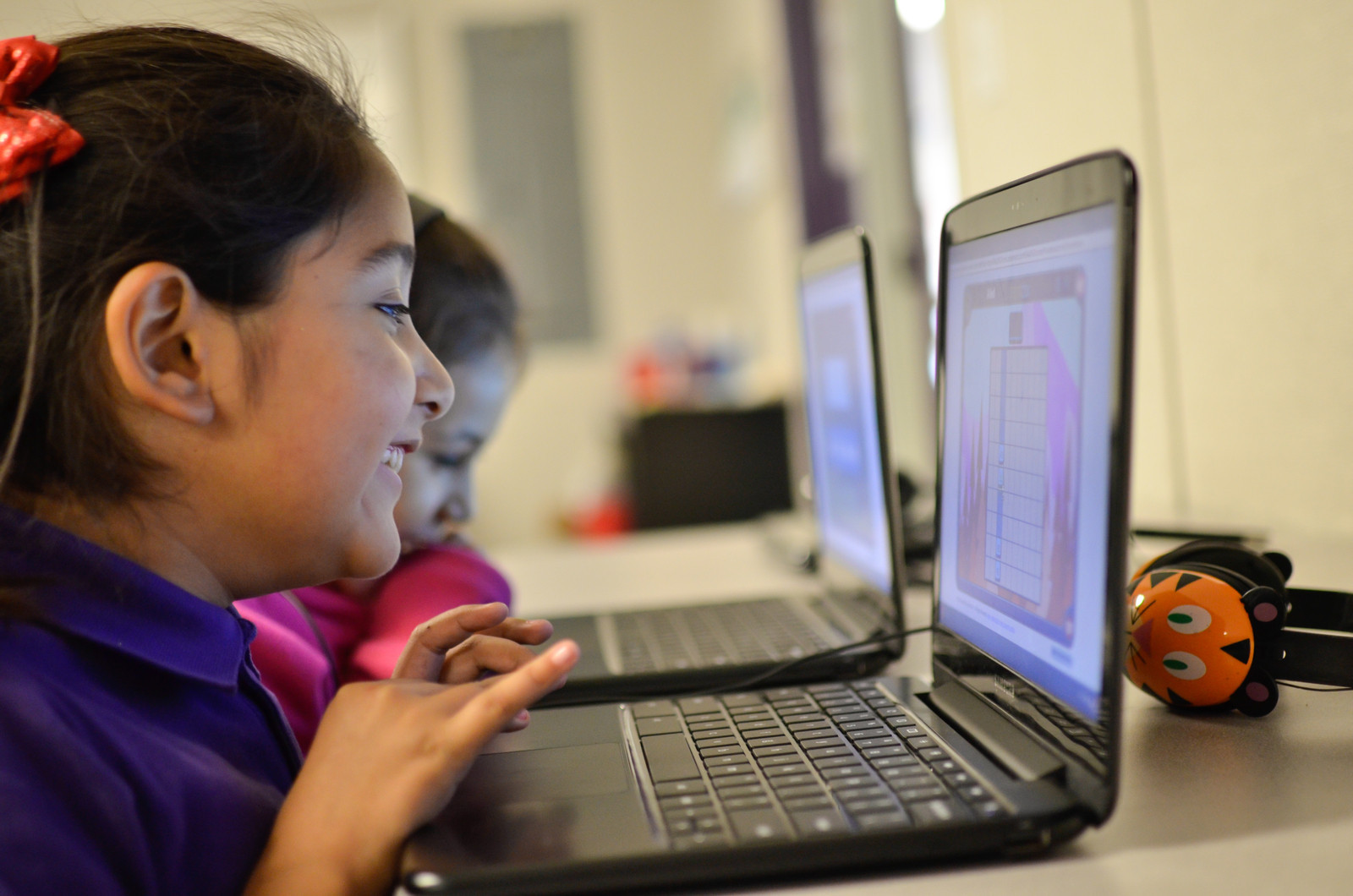
A Look into our Personalized Learning Toolbox
by Stephen Pham, Senior Associate, Personalized Learning
Here at Rocketship, we strive to deliver personalized instruction to our Rocketeers, giving them the right level of academic support right when they need it. By strategically leveraging teacher-led instruction, in-class activities, small-group instruction and our suite of blended learning programs, we do our best to balance the modalities of learning and give every student the academic supports they need.
Zooming into our blended learning programs, you’ll find that we don’t just depend on one online program to meet all of the needs of our students. Rather, we utilize a suite of programs – our personalized learning toolbox. After putting these programs through methodical pilots, assessing their benefits based on a disciplined rubric and ensuring each fits into our suite, we’ve put together a group of programs that support our instructional model. Below, you’ll find an infographic that compares our online learning programs side-by-side and forms our comprehensive suite.
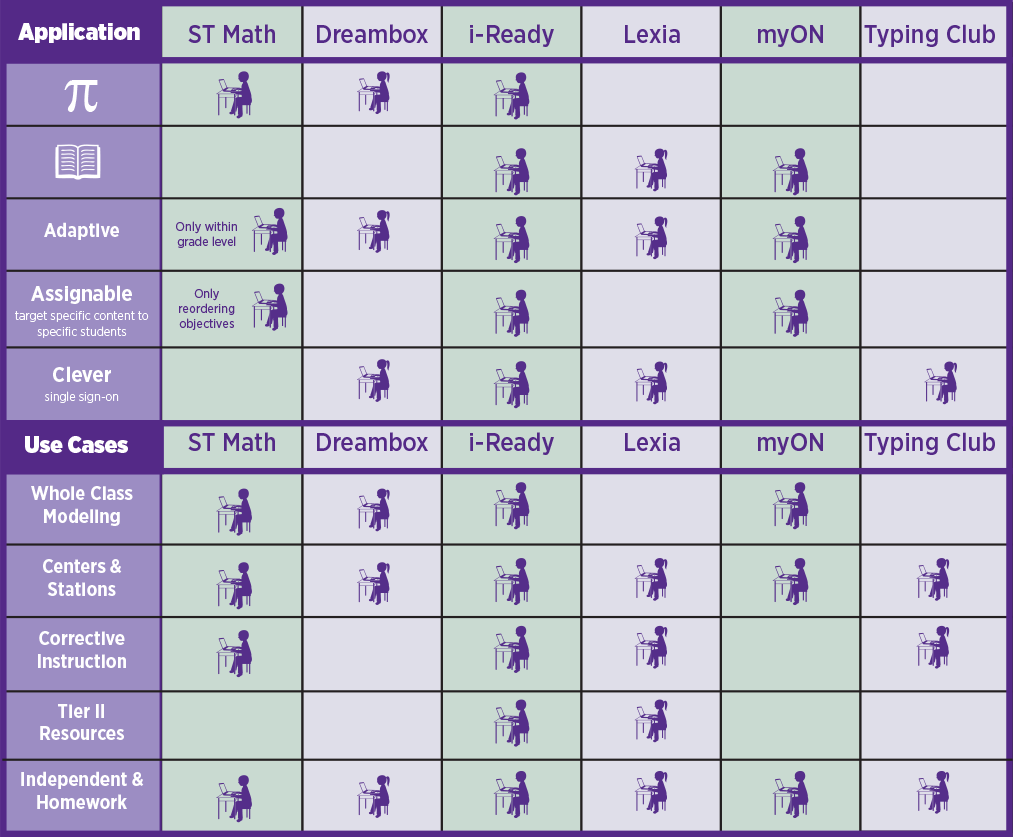
Each learning program serves different applications. Altogether, our suite of online tools support our Rocketeers in achieving their personal learning goals.
As you can see, no one program is the end-all, be-all. Rather, each has distinct features that complement one another.
Content & diversity
By utilizing a suite of different programs, we’re able to support students with many different needs. Three of our programs cover math, three cover literacy and one covers typing skills. Within our math programs, ST Math focuses on visual and conceptual understanding, while the other programs utilize visuals to build concrete math skills. ST Math also focuses solely on chronological grade level, while all other math and literacy programs adapt above and below a grade level based on student need. Within our literacy programs, Lexia Core5 and i-Ready build phonemic and reading comprehension skills, while myON focuses on independent reading and reading comprehension. Altogether, the programs create a diverse set of activities that give variety and keep students engaged in their learning.
Adaptability
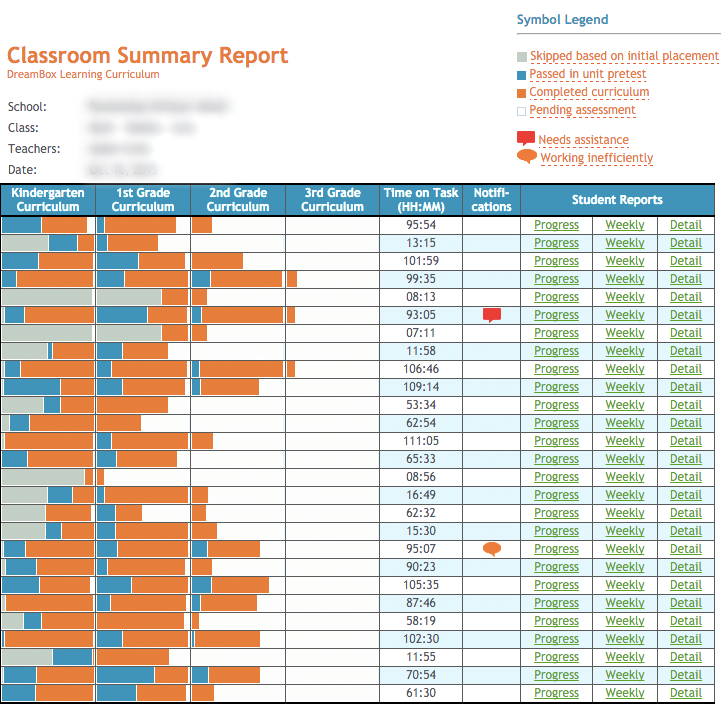
DreamBox allows teachers to see the current progress of every student. Through its adaptive technology, students work at their own pace and at the right level of rigor.
A key feature we look for in our online learning programs is the level of adaptability. A program is adaptive if it automatically senses a student’s gap in understanding or mastery of a skill and systematically changes the pace or lessons at hand that the student encounters as a consequence. Often, programs will assess student understanding through instructional lessons or intermittent mini-tests, adjusting as necessary to focus on that individual student. Programs that assess regularly in this fashion include DreamBox, Lexia Core5 and myON. Other programs, such as i-Ready and ST Math, utilize more extensive diagnostic assessments or pre-tests to gauge a student’s level and assign appropriate instructional lessons. Through these intelligent adaptive systems, students focus on their own personalized levels, working on the skills that they need to practice most.
Assignability
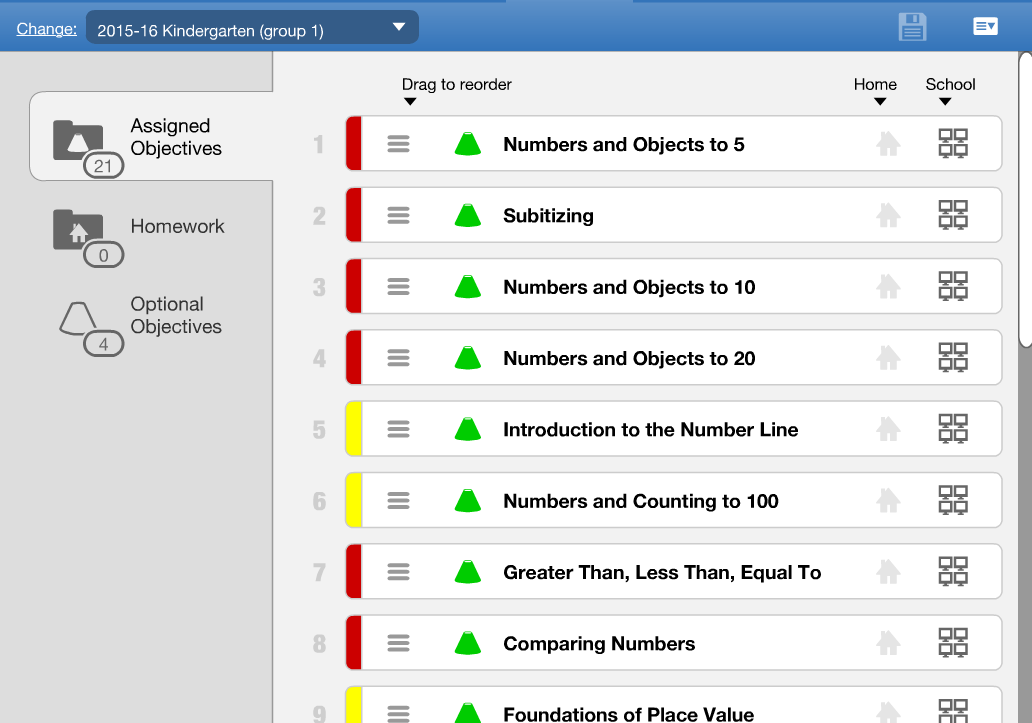
ST Math allows teachers to reorder and assign specific learning objectives to their classes, ensuring that students practice content that is aligned to classroom instruction.
Additionally, we leverage programs that allow for in-program assignability. Rather than giving online programs 100% control over the online content that students engage in, we balance both online assessment systems as well as teacher input. Several of our programs, including i-Ready, ST Math and myON, allow teachers to assign lessons, reorder objectives or select books for students to see in their online portals. While ST Math & myON allow these customizations for classes, i-Ready allows for an even higher level of assignability, allowing teachers to modify instruction for groups of students or even individual students. Through this balance of integrated adaptive assessments and teacher input based on other assessments, we can ensure that the programs truly match student needs, both inside and outside of the programs.
Teacher dashboards
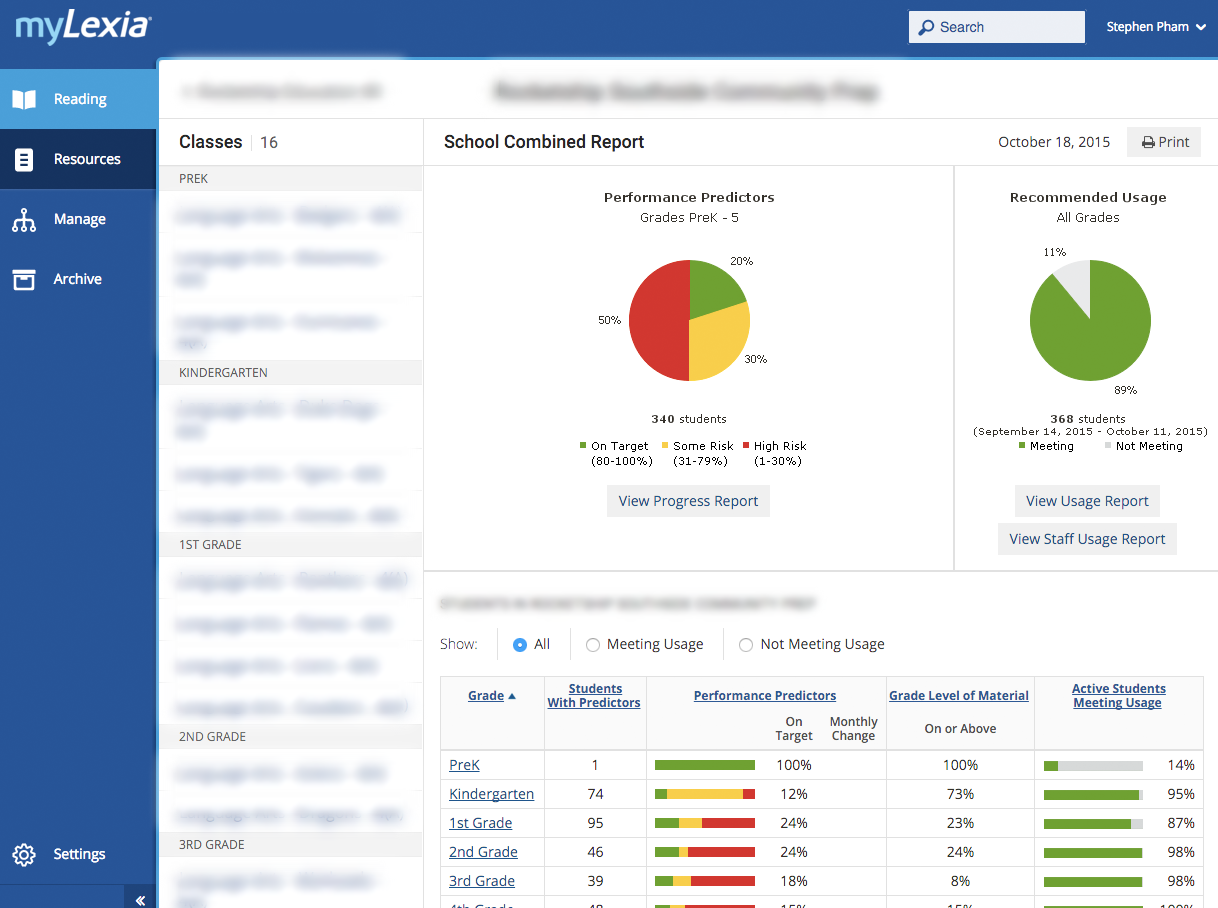
myLexia provides actionable data for the Lexia Core5 program. With insights into student placement, continual growth and overall usage, teachers can push learners to excel with achieving goals with the support of online programs.
The last, arguably most important, feature that we utilize in our online learning programs is the teacher analytics. These dashboards give teachers real-time data on how students are performing. They break down assessments, individual lessons and overall usage, allowing teachers to adjust both online and in-class programming. Teachers may utilize assignability features to assign specific lessons or domains of instruction or even adjust the order of objectives that classes encounter. Teachers can also customize features such as when a student can access online instruction, assessments or games within the programs. Through these insights, teachers can ensure our programs are highly focused and continually benefiting student outcomes.
Altogether, our balance of online learning programs creates our comprehensive personalized learning toolbox. By leveraging the strengths of each program, we are able to customize our students’ personalized learning experiences and ensure we eliminate the achievement gap – one student at a time.
Stephen is a part of Rocketship’s Achievement Team, overseeing the implementation of online learning and driving the personalized learning initiatives throughout the network. Previously, Stephen was a 5th grade Integrated Math teacher at Sí Se Puede Academy, where he first began his work leveraging blended learning strategies to improve outcomes for all students. Stephen grew up in Southern California and attended the University of California, Los Angeles where he studied biophysics. After graduating, he joined Teach for America and began his career at Rocketship. Stephen now lives in San Francisco and enjoys discussing all things technology, trying all types of foods, traveling and spending time outdoors with friends.
>Follow Stephen on Twitter: @stephenqpham
Published on October 19, 2015
Read more stories about: Most Popular Stories, Personalized Learning.


